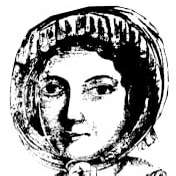
1827 - 1859
Celestina Sommer
Summary
Name:
Celestina SommerYears Active:
1856Birth:
July 01, 1827Status:
DeceasedClass:
MurdererVictims:
1Method:
Throat slashingDeath:
April 11, 1859Nationality:
United Kingdom
1827 - 1859
Celestina Sommer
Summary: Murderer
Name:
Celestina SommerStatus:
DeceasedVictims:
1Method:
Throat slashingNationality:
United KingdomBirth:
July 01, 1827Death:
April 11, 1859Years Active:
1856Date Convicted:
April 10, 1856bio
Celestina Sommer, born Celestina Christmas on 1 July 1827 in Islington, Middlesex, hailed from a reputable family of silversmiths. She was the fourth of eight children and received a refined upbringing. Gifted in music, she became an accomplished pianist and music teacher, performing with the prestigious John Hullah school of music at St Martin's Hall in Covent Garden. Her early life reflected middle-class Victorian respectability.
However, in 1845, at the age of 18, Celestina gave birth out of wedlock to a daughter whom she also named Celestina. Due to the social stigma and hardships of unwed motherhood during the Victorian period, she placed her infant daughter in the care of foster parents, Thomas and Julia Harrington, severing close ties but maintaining knowledge of her daughter’s whereabouts.
In 1854, Celestina married Charles (Karl) Sommer, a Prussian-born metalworker who may have worked in her father's silversmithing trade. The couple married at St Mary’s, Islington Parish Church, and resided in Charles’ home on the newly developed Packington Estate. Charles appeared to have no prior knowledge or relationship with Celestina’s daughter. The marriage appeared stable from the outside, but Celestina's internal life—particularly her long-buried shame and trauma over her daughter—seemed to boil beneath the surface, setting the stage for a tragic and violent act.
murder story
On 16 February 1856, Celestina Sommer traveled to Hackney to retrieve her now 10-year-old estranged daughter from the Harrington foster family. She took the child back to her home under the pretense of a visit. Once inside the front cellar of her Islington residence, Celestina brutally murdered the girl by cutting her throat. The grisly act was heard by her domestic servant, Rachel Munt, who was sleeping in the adjacent kitchen. The next day, after nervously holding her secret, Munt found an opportunity to raise the alarm. On 17 February 1856 at 4:30 PM, police arrested both Celestina and her husband Charles Sommer. They were transported to Hoxton Police Station by Inspector Edward Hutton and Sergeant Edwin Townsend.
Two hearings were held at Clerkenwell Police Court before Magistrate William Corrie JP. The dead child was identified as Celestina’s illegitimate daughter. Charles Sommer was released after investigators determined he was not at home at the time of the murder and had never met the child. A formal inquest at the North Pole Inn on New North Road found Celestina culpable, and tensions surrounding the case sparked public outrage. As Munt left court, she and her sister were pursued by a furious mob, forcing police to intervene to ensure their safety.
Celestina Sommer’s trial opened at the Old Bailey on 7 March 1856 but was adjourned to allow time for her defense to investigate claims of mental illness. When the trial resumed on 10 April 1856, it took the jury only 15 minutes to find her guilty of willful murder. In the courtroom, Celestina was described as pale, fragile, and barely able to sit upright. She requested smelling salts and nearly collapsed when the guilty verdict was read. Justice Crompton, donning the black cap, sentenced her to death by hanging.
However, public debate over criminal insanity and the growing social movement against capital punishment shaped the aftermath. Celestina’s supporters—including Alfred Dymond of the Society for the Abolition of Capital Punishment and her solicitor, Charles Octavius Humphreys—lobbied the Home Secretary, Sir George Grey. Grey eventually granted a last-minute reprieve, commuting her sentence first to transportation and later to life in penal servitude. The decision stirred outrage across Britain, with the press labeling her a manipulative “she-devil” and Parliament demanding explanations. Despite widespread demands, the Home Secretary never publicly explained his reasoning, and a secret letter reportedly written for his successor has never been found.
Celestina’s reprieve did not end her torment. She was initially held on death row in Newgate Gaol with two other female murderers, Elizabeth Ann Harris and Mary Alice Seago. She was then transferred to Millbank and later to Brixton Women’s Prison. There, her physical and mental health deteriorated rapidly. Eventually diagnosed as suffering from "confirmed lunacy," she was moved to Fisherton House Asylum near Salisbury, then the largest criminal mental asylum outside of Bethlem.
Celestina Sommer died on 11 April 1859 at age 31. A post-mortem reported death by hemiplegia due to brain congestion, a condition possibly connected to her mental state. She was buried five days later in Fisherton Anger Cemetery. No grave marker survives today.
Her case sparked fierce debate over gender, mental health, and capital punishment in Victorian England. Though some viewed her reprieve as an injustice, others argued her crime was the product of insanity, Victorian repression, or maternal desperation. Her legacy endures as a flashpoint in the evolving discourse on women's rights, mental illness, and the morality of execution.